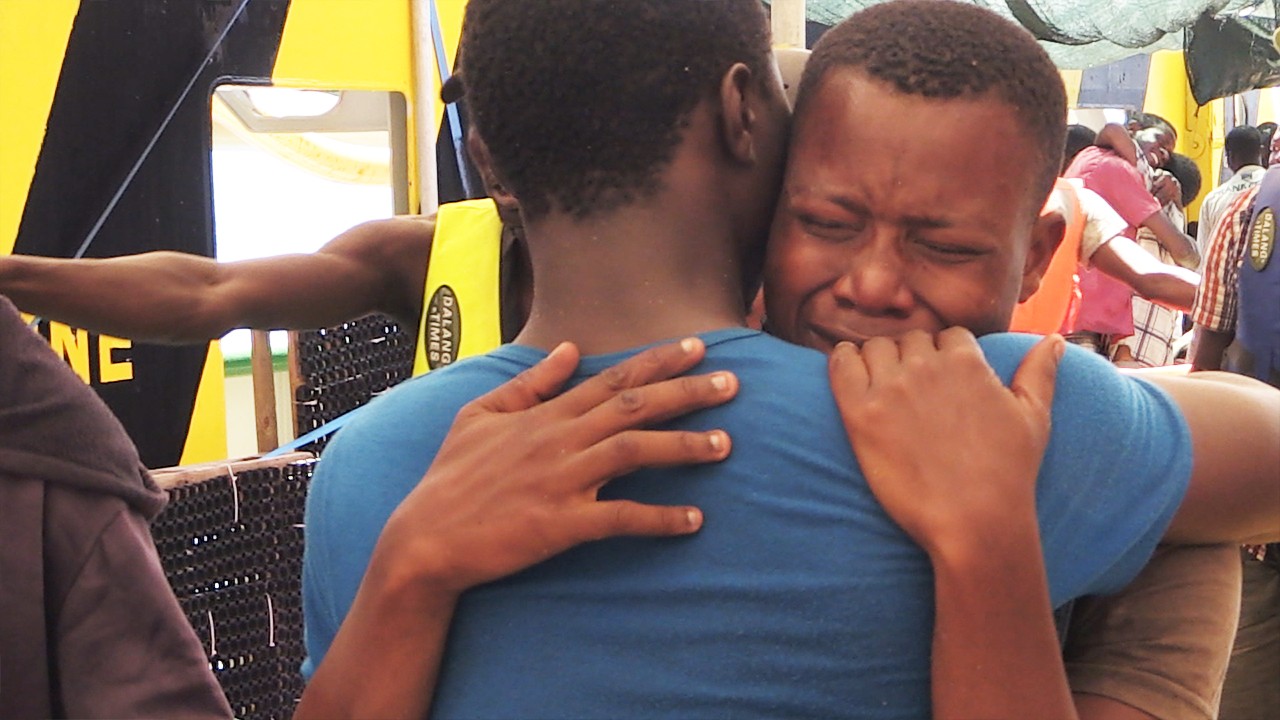We're nearly one month after President Donald Trump tried to ban all refugee claims, and already hundreds of people have fled the US into Canada, many of them on foot in waist-high snow.There has since been disagreement about what it means for Canada to have so many refugees coming in outside ports of entry. Is it illegal? Are they "skipping the queue"? And what exactly are the "legal, safe ways of entering Canada" that our Conservative immigration critic is talking about?
Advertisement
Felicia* and Marco*, Guatemalan parents of three kids, learned the hard way that the US-Canada border is not a legal or safe place to make a refugee claim last year. The much-debated "safe third country" agreement between Canada and the US deemed their plea inadmissible before any mention of kidnapping or murder. They say it was out of an effort to come to Canada the "right" way that they may now be sent back to the violence they fled.Their story begins in Guatemala, where Felicia and Marco say they were outspoken critics of political corruption. They told VICE one politician they complained about sent them death threats, and his associates attempted to kidnap Felicia and her kids.The couple said they knew they were being followed, too, but still did not feel safe reporting to police. Marco said his brother-in-law was killed by drunk police, and that Felicia's sister was kidnapped, raped and tortured as a student activist decades before. One night in June 2016, while driving with their eight-year-old daughter in the back seat, the parents say they were chased. Marco said he remembered five gunshots fired at their car."Then I said OK, it's over. We need to get out," Felicia told VICE. "One day more there, and maybe we wouldn't be alive today."They didn't waste any time leaving the country. Felicia said they had friends drive their family across the border to El Salvador, because they feared authorities may be waiting for them at the airport. They had no time to form a plan, only a couple hastily-packed bags and a few hundred dollars in cash, Marco told VICE.
Advertisement
Marco and Felicia managed to get on a red eye flight to Dallas, the first leg of a two-day journey to Canada. With talk of building a wall to keep out "bad hombres" heating up ahead of the 2016 election, they decided Texas was "not a good place for us."They arrived at the US-Canada border between Blaine, Washington and White Rock, BC in the middle of the night, and told border guards that they were seeking asylum right away. At the time, Marco says his English wasn't very good, and they weren't immediately offered a translator. "We were just like, 'We run, boom boom.'"Read More: Just How Much Are Refugees Risking to Illegally Cross into Canada?Marco and Felicia say they had plenty of documentation of threats and incidents back home, but that wouldn't matter that night. The family was detained at the border for nearly 24 hours, but never allowed to complete refugee applications. Officers told them about the safe third country agreement, that they were inadmissible to Canada because they traveled through the US. They would not be allowed to apply again.Marco said he and Felicia had no idea—they only wanted to follow the rules. "I said there is no direct flight from Guatemala to Canada. There is no ship, no train, no nothing," he told VICE. "He said to me that's not my problem."The family walked back to the US at 1 AM in pouring rain, where they were told their attempt to seek asylum in Canada would likely disqualify them from applying as refugees in the US as well. This is what would be in store for most of the hundreds of refugees that have been crossing into Canada, if they decided to declare themselves at a regular border.
Advertisement
At this point, Felicia and Marco say they were desperate. They didn't have money left, and they still hoped to reach a friend of Marco's that lived in the Vancouver area. They decided to leave their bags and belongings behind, and walk across into Canada, passing police cruisers and heat-detecting sensors along the way. After arriving at a White Rock golf course, they managed to pay for a cab ride to a transit line with Marco's watch.The family declared themselves to the Canadian Border Services Agency when they arrived, and have been fighting deportation through a process called pre-removal risk assessment. Because they face danger at home, Marco and Felicia hope the government will let them stay on compassionate grounds. More likely they will be deported back to the country they fled."CBSA said we are criminals, they remind us every time we have a meeting with them," Marco told VICE. According to Vancouver-based immigration lawyer Laura Best, about five percent of cases like these successfully halt deportation, compared with about 50 percent of general refugee claims that are accepted. If they had crossed on foot first, Felicia and Marco's chances of staying would be closer to 50-50."It's an interesting agreement in that it actively encourages people to come by not appearing at a port of entry," Best told VICE. "They know they can't come to the border and present themselves in an orderly fashion."
According to Vancouver-based immigration lawyer Laura Best, about five percent of cases like these successfully halt deportation, compared with about 50 percent of general refugee claims that are accepted. If they had crossed on foot first, Felicia and Marco's chances of staying would be closer to 50-50."It's an interesting agreement in that it actively encourages people to come by not appearing at a port of entry," Best told VICE. "They know they can't come to the border and present themselves in an orderly fashion."

Advertisement
Best says refugees therefore often act on "very bad advice" from smugglers, sometimes destroying all their original identity documents—a move that can result in extended jail time while authorities figure out who they are. "By not allowing people to enter in an orderly fashion, we're pushing them to get the advice of people who are not operating within the same sort of normal legal and moral constraints."Best says that the numbers coming in on foot aren't "unprecedented" or out of step with Canada's history of granting asylum. "It's still very low—far below the thousands making refugee claims in Canada even a couple years ago," she said. For a sense of the range: we took in about 33,000 refugees in 2009, and 16,000 in 2015. "If there are extra hundreds, maybe thousands who will walk, it's still not the highest refugee flows Canada has seen."Read More: At the Manitoba Border as More Refugees Flee Donald Trump's AmericaMarco and Felicia say it's been surreal watching the US struggle with a 120-day hold on all refugees, and a ban on travellers from seven Muslim-majority countries. Those developments have only deepened their resolve that they made the right decision and followed rules the best they could. "The kids are the main reason we came, and the kids are the reason we are doing everything by the law," Felicia said.Marco says he was disturbed to see Prime Minister Justin Trudeau tweet a welcoming message to refugees after Trump's executive orders. He said it was like a knife in the backs of people fleeing persecution, to say one thing but leave the rules unchanged.
Advertisement
Marco and Felicia have now been in Canada just over six months. Marco has been able to get a temporary work permit, their daughter has been able to attend elementary school, and they're both learning English. "We've had enough time to connect with people, to volunteer in many places," Felicia told VICE. "We want to demonstrate that we need the protection and we will be useful for the country too."Felicia says she tries not to think about what would happen if the Canadian government does choose to deport her family back to Guatemala. "They are going to kill us. They are looking for us. Now they are texting my mother in law and my brother, saying they will find us.""We live with that fear, because we can't go back."*Names have been changed to protect from threats.Lead image of the Peace Arch border crossing by Darryl DyckFollow Sarah Berman on Twitter.
